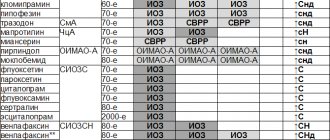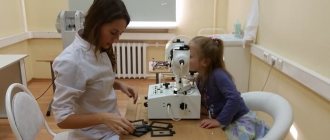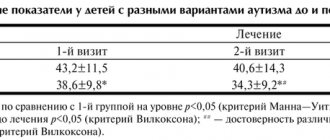Application of Elidel cream for atopic dermatitis
Aida
February 18, 2020
Hello. The child is 6 months old. From the age of 3 months, rashes began in the form of redness and peeling with weeping skin on the folds under the knees and neck, rarely on the inside of the elbow folds and on the cheeks. The skin in the area of the rash is very itchy. A diagnosis of Atopic Dermatitis was made. Child on breastfeeding. We are just about to introduce complementary foods. I follow a diet, I don’t eat eggs, milk and dairy products, I don’t eat meat at all, tomatoes, mushrooms, citrus fruits, fish and seafood, nuts, red fruits and vegetables, berries, and I periodically exclude gluten-containing foods. I don’t see any particular effect from the diet (except that when I introduce fermented milk products and cheese into my diet, white lumps appear in the child’s stool, which disappear immediately after eliminating these products from the diet... I’ve experimented several times already, the result is always the same). Based on the results of the last visit to the allergist, some tests were taken, the results: Vitamin D (total): 16 (normal from 30), allergen egg, IgE: 15.7, allergen Corrvier milk, IgE: 0.71. The doctor prescribed treatment: taking vitamin D for a long time, Advantan for two weeks, then Elidel for 14 days, 2 times a day, then 14 days, 1 time a day. Eliminate milk, dairy products and eggs from your diet. But here's the thing - Elidel helps us so well (even better than Advantan) that two days after starting use, not a trace remains of the rashes and on the third day I actually apply it to healthy skin. But the instructions for the drug indicate that it is applied only to damaged skin. It turns out that the scheme proposed by the doctor does not suit us. But at the same time, I note that after achieving “clean” skin on the third day, I tried to stop the drug, as a rule, after a couple of days the rashes appeared again. Taking into account the above, I ask you to recommend a skin treatment regimen with Elidel, which will suit us, taking into account the very fast, but short-term effect of using the drug. Or he can use it according to the scheme previously proposed to us, despite the recommendations in the annotation for the drug. And I also ask you to tell me, is it possible at this stage of medical development to identify the cause of this disease in order to eliminate the “root” of the problem, and not its manifestations in the form of rashes? Which direction should we go? What tests should I take? Which doctors should I contact? After all, Elidel can be used in general for no more than 6 months (that’s what the allergist said), but what should we do next?? The diet, as I indicated earlier, has no effect. I’ll also add that I suffered from this illness as a child. For up to a year, I had rashes on my cheeks, then they went away, and from 2 to 5 years old, the inside of my elbow folds rashed out. As I understand it, atopic dermatitis is my genetic “gift” to my son. But maybe something can still be done? Thank you for your opinion.
The question is closed
allergy
atopic dermatitis
elidel
Elidel in dermatological practice
IN AND. Kulagin, D.K. Nazhmutdinova, E.V. Taha
Atopic dermatitis (AD) is one of the most pressing problems of dermatology, which is associated with a significant increase in the incidence of this dermatosis, characterized by a chronic course with frequent relapses, as well as the insufficient effectiveness of existing treatment methods. The incidence of AD has increased in recent decades. Among people born before 1960, 1.4% to 3% had one or more episodes of BP, and among those born after 1970, the rate ranged from 8.9% to 20.4%. The incidence of AD is especially high in children.
In developed countries, approximately 10–15% of children under 5 years of age suffer from AD, and 48–75% of them show initial signs of the disease within the first 6 months. life. Thus, AD has become a socially significant disease, especially given the high incidence among children. Clinical manifestations of atopic dermatitis are characterized by intense itching, inflammation, infiltration, lichenification in typical locations of the skin process, as well as general increased dryness of the skin. The disease most often occurs in childhood; relapses are usually associated with errors in diet and stress. Atopic dermatitis is an immune-dependent disease characterized by the immune system by hyperproduction of IgE, disruption of cytokine regulation and the Th1/|Th2 lymphocyte ratio, deterministic deficiency of suppressor T lymphocytes, and disruption of apoptosis processes. In the pathogenesis of the disease, an imbalance of intracellular regulatory mechanisms (cAMP/cGMP ratio), disruption of membrane reception, activation of non-immune mechanisms for the release of allergic mediators, disruption of neurovegetative and peripheral circulation with vascular instability and disruption of endothelial reception are essential; psychophysiological and psychosomatic abnormalities. In the external treatment of this dermatosis, corticosteroids are often used, which are not free from side effects. However, significant progress and scientific achievements in the field of clinical immunology have made it possible to decipher many previously unknown mechanisms of the immunopathogenesis of this disease, which served as an incentive for the creation of new drugs with targeted, selective effects on allergic processes in the skin.
These drugs are external inhibitors of inflammatory cytokines, belonging to the class of ascomycin macrolactams. On the domestic drug market, a representative of this group is 1% pimecrolimus (Elidel cream, Switzerland). Pimecrolimus (Elidel) is a new nonsteroidal inflammatory cytokine inhibitor developed specifically as a topical treatment for atopic dermatitis. This substance has a selective effect on the inflammatory process in the skin and does not affect the local and systemic immune response. Pimecrolimus is a derivative of the macrolactam ascomycin. Selectively inhibits the production and release of cytokines and mediators from T lymphocytes and mast cells. Has anti-inflammatory properties. Pimecrolimus specifically binds to macrophilin-12 and inhibits the calcium-dependent phosphatase calcineurin. As a result, by blocking the transcription of early cytokines, pimecrolimus suppresses the activation of T lymphocytes. In particular, in nanomolar concentrations, pimecrolimus inhibits the synthesis of interleukin-2, interferon-? in human T-lymphocytes. (Th1 type), interleukin-4 and interleukin-10 (Th2 type). In addition, in vitro, after interaction with the antigen/IgE complex, pimecrolimus prevents the antigen/IgE-mediated release of cytokines and inflammatory mediators from mast cells. Pimecrolimus does not affect the growth of keratinocytes, fibroblasts and endothelial cells. In experimental models of skin inflammation, the high anti-inflammatory activity of pimecrolimus was demonstrated after its local and systemic application. When applied topically in porcine models of allergic contact dermatitis (ACD), pimecrolimus is as effective as the highly active corticosteroids clobetasol-17-propionate and fluticasone.
Unlike clobetasol-17-propionate, pimecrolimus does not cause skin atrophy in pigs. Unlike clobetasol-17-propionate and fluticasone, pimecrolimus also does not cause thickening or changes in skin consistency in pigs. Pimecrolimus has been shown to inhibit the inflammatory response to cutaneous irritants in rat models of contact dermatitis. In addition, when administered topically and orally, pimecrolimus effectively reduces skin inflammation and pruritus and normalizes histopathological changes in hypomagnesemic hairless rats, which are models of acute atopic dermatitis. Compared to tacrolimus, topical pimecrolimus penetrates the skin equally well in experimental models. However, due to its high lipophilicity, the penetration of pimecrolimus through the skin is 10 times less than that of tacrolimus. Therefore, pimecrolimus has a selective effect on the skin. Pimecrolimus is effective against skin inflammation, but at the same time its effect on the systemic immune response is very small. Overall, the unique mechanism of action of pimecrolimus is the combination of skin-selective anti-inflammatory activity with a low ability to induce systemic immune responses. Treatment should begin at the first manifestations of the disease to prevent its sudden exacerbation. 1% Elidel cream 2 times a day is applied in a thin layer to the affected surface and gently rubbed until completely absorbed.
The drug can be applied to the skin of any part of the body, including the head, face, neck, as well as to diaper rash areas. The cream should be applied 2 times a day until symptoms disappear completely. After cessation of treatment, in order to avoid subsequent exacerbations, at the first signs of relapse of atopic dermatitis, therapy should be resumed. Emollients can be applied immediately after applying Elidel 1% cream. However, after water procedures, emollients should be used before applying Elidel cream. The use of Elidel 1% cream may cause minor transient reactions at the application site, such as a feeling of warmth and/or burning. If these reactions are severe, patients should consult a doctor. The most commonly reported side effects were application site reactions, which occurred in 19% of patients treated with Elidel 1% cream and 16% of control patients. These reactions mainly occurred early in treatment and were minor/moderate and short-lived.
Frequency of side effects: very often? 10%; often – from?1% to <10%; sometimes – from ?0.1% to <1%; rarely – from ?0.01% to <0.1%; very rare <0.01%. Very common: burning sensation at the site of application of the cream. Common: local reactions (irritation, itching and redness of the skin), skin infections (folliculitis). Sometimes: suppuration; worsening of the disease; herpes simplex; dermatitis caused by the herpes simplex virus (eczema herpes); molluscum contagiosum, local reactions such as rash, pain, paresthesia, peeling, dryness, swelling, skin papillomas, boils. Clinical studies of Elidel (E) in the treatment of patients with AD demonstrated a rapid onset of action of the drug, in which the intensity of itching decreased after 2-3 days of using Elidel cream, and all symptoms of AD regressed in most patients during the course of therapy. The beneficial effect of treatment with pimecrolimus was observed throughout the study (up to 43 days) in infants 3–23 months and children 2–17 years old, and E was especially effective when the process was localized on the face and neck, and during subsequent clinical follow-up, the absence of pronounced AD symptoms persisted for up to 6 months [Eichenfield L. et al., 2002; HoV. et al., 2003]. Subsequent clinical studies confirmed the effectiveness of the use of E in the treatment of AD in children and adults, and established that long-term (up to 6 months) use of E helps control the disease and prevents the development of severe exacerbations of AD, while at the same time does not lead to the development of significant side effects, such as pyogenic or viral superinfection. Clinical studies conducted in Russia (Russian State Medical University, Moscow Medical Academy named after I.M. Sechenov, Ural Research Institute of Dermatovenerology and Immunopathology, etc.), with the participation of patients with AD of various age groups, in the treatment of which the new topical drug Elidel cream was used, demonstrated effectiveness of more than 95% of patients.
The effect of the drug was noted already in the first week of use, when the area of skin lesions and the severity of AD symptoms decreased by 1.4–1.8 times, and the intensity of itching and sleep disturbances decreased by almost 2 times. The SCORAD score decreased by 2.5–4.6 times compared to the baseline. Elidel cream was especially clinically effective in the treatment of patients with AD in children under 3 years of age and adolescents, which was confirmed by a significant decrease in the SCORAD index and its components. In adult patients, a significant decrease in the intensity of itching was noted after completion of therapy. During the study, there were no adverse events or complications; Elidel cream was well tolerated in most patients. Thus, summarizing the results of research and the experience of foreign and domestic scientists, we can conclude that Elidel cream is effective in the treatment of children, adolescents, and adults with AD, and its use in widespread clinical practice by dermatologists allows optimizing the treatment of patients with AD.
Literature
1. Atopic dermatitis in children. Guide for doctors. Edited by N.G. Korotky. 2003; 82–90.
2. Atopic dermatitis. Guide for doctors. Ed. Yu.V. Sergeeva. 2002; 8 p.
3. Balabolkin I.I., Grebenyuk V.N. Atopic dermatitis in children, – M.: Medicine, 1999. – 238 p.
Kungurov N.V., Gerasimova N.M., Kokhan M.M. Atopic dermatitis (types of course, principles of therapy) - Ekaterinburg: Ural Publishing House. Univ., 2000.–266 p.
4. Kungurov N.V., Kokhan M.M.Keniksfest Yu.V. et al. Experience of using Elidel cream in the treatment of topical dermatitis in children and adults: Breast Cancer, v. 12, no. 4, pp. 171–174. Sergeev Yu.V., Ivanov O.L., Novikov D.K. Atopic dermatitis: modern diagnosis and treatment // Immunopathology, allergology, infectology. –2001. –No. 4. -WITH. 28–48
5. Skripkin Yu.K., Samsonov V.A., Selissky G.D., Gomberg M.A. Modern problems of dermatovenerology // Bulletin of dermatology and veterinary
neurology. –1997. –N6. –P.4–8.
6. Smirnova G.I. Modern technologies for local treatment of atopic dermatitis in children // Immunopathology, allergology, infectology. –2003. -No. 3. -WITH. 75–82.
7. Fedenko E. S. Atopic dermatitis: rationale for a step-by-step approach to therapy // Consilium medicum. –2001. –No. 3 (4). -WITH. 176–184.
8. Hultsch T. et al. Ascomycin macrolactam derivative SDZ ASM 981 inhibits the release of granule–associated mediators and of newly synthesized cytokines in RBL 2H3 mast cells in an immunophilin–dependent manner // Arch. Dermatol. Res. – 1998. –Vol.290. –P.501–507.
9. Kapp A. et al. Long-term management of atopic dermatitis in infants with topical pimecrolimus, a nonsteroid anti-inflammatory drug // J. Allergy Clin. Immunol. – 2002. –Vol.110. –P.277–284.
10. Lewis–Jones MS, Finlay AY, Dykes PJ The Infants' Dermatitis Quality of Life Index // Br. J. Dermatol. – 2001. –Vol. 144. –P. 104–110.
11. Meurer M. et al. Pimecrolimus cream in the long-term management of atopic dermatitis in adults: A six-month study // Dermatology. – 2002. –Vol. 205. –P.271–277.
12. Schultz–Larsen F, Hanifin JM. Epidemiology of atopic dermatitis // Immunol. Allergy Clin. North Am. –2002. –Vol.22. –P.1–24.
13. Stuetz A et al. Pimecrolimus does not affect Langerhans' cells in murine epidermis, in contract to corticosteroids // J. Invest. Dermatol. – 2002. –Vol.119. P. 347
14. Tofte SJ, Hanifin J..M. Current management and therapy of atopic dermatitis // J. American Acad. Dermatol. –2001. –Vol. 44(1). -R. 13–16.
15. Wahn U et al. Efficacy and safety of pimecrolimus cream in the long-term management of atopic dermatitis in children // Pediatrics. – 2002. – Vol. 110. –P.158–159.
Published with permission from the administration of the Russian Medical Journal.




